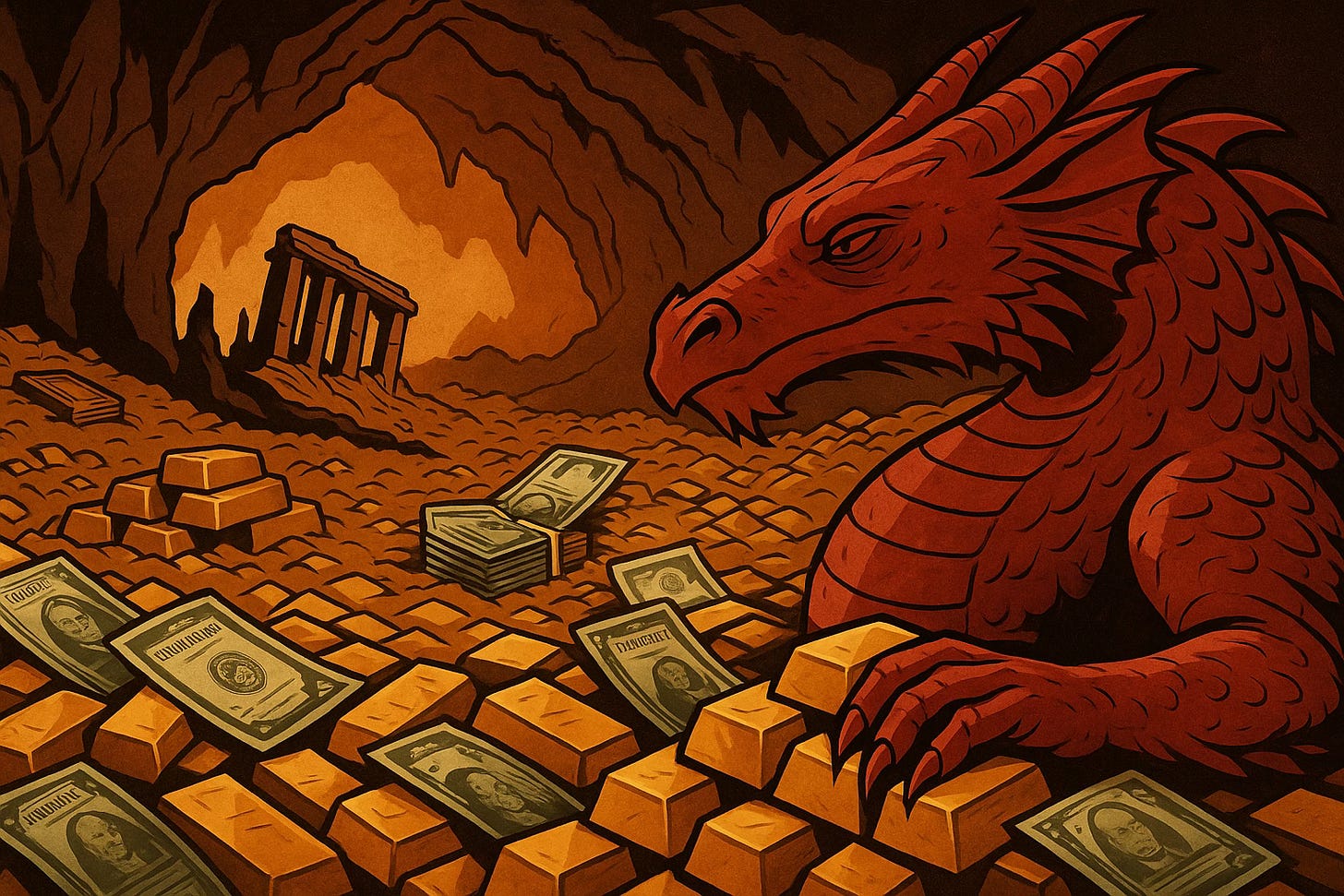The $500 Billion Question
Where China's money went after leaving U.S. Treasury bonds
Most people missed it, but something profound happened recently. China quietly dumped another chunk of U.S. Treasury bonds, bringing their holdings down to $759 billion. That’s half a trillion dollars less than they held a decade ago.
Where did all that money go? Into something far more interesting.
While financial media obsesses over Fed rate decisions and stock market chatter, the People’s Bank of China has been doing something far more strategic. They’ve been buying gold like it’s going out of style. Over 2,200 tonnes now sit in their vaults, triple what they held in 2009.
But they’re not just buying through traditional channels. China has built its own ecosystem. The Shanghai Gold Exchange now sets gold prices in yuan twice daily. Not dollars. Yuan. It sounds technical, and it is, but it also means something profound: countries can now buy and sell gold without ever touching the dollar system.
America’s debt passed $34 trillion last year. Jerome Powell himself called the trajectory “unsustainable.”
When the guy in charge of the money printer says we’re printing too much, maybe someone should pay attention.
China has been paying attention. For years.
Month after month, they reduce their Treasury exposure. Month after month, they buy more gold. The pattern is so consistent you could build a trading model on it.
The numbers tell the story: Over half of China’s cross-border transactions are now settled in yuan. Argentina now pays China in yuan. Russia sells oil to China in yuan. African countries settle trade in yuan because dollars are hard to come by and even harder to keep.
The Shanghai Gold Benchmark isn’t just some financial novelty. It’s the bedrock of an alternative system. One that allows countries to trade, price, and settle gold in yuan. No New York, no Washington, no SWIFT, no sanctions. Just business.
Every time Washington turns the dollar into a geopolitical weapon, another country starts looking for the exit. It’s basic game theory. Either our policymakers missed that class or they’re pretending it doesn’t exist.
The Cross-Border Interbank Payment System processes yuan globally. Currency swap agreements with over 40 nations back it up. The Belt and Road Initiative isn’t just about concrete and steel. It’s about making countries economically dependent on a system that doesn’t require aircraft carriers.
This is what patient capital looks like. While America debates bathroom signage and TikTok regulations, China is laying train tracks in Africa, constructing ports in Latin America, and building financial rails that completely bypass the West.
They’re not trying to conquer the world. They’re making themselves indispensable to it.
Here’s how this plays out: Once oil trades in yuan, gold trades in yuan, and infrastructure is financed in yuan, countries need fewer dollars. Less demand means higher interest rates in the U.S. Higher rates mean higher deficits. That leads to more money printing. More printing means less confidence. Less confidence drives more countries toward alternatives.
It’s a feedback loop that should be obvious to anyone with a basic understanding of macroeconomics. Yet here we are.
China doesn’t want to make the yuan the new global reserve currency. That would be stupid. They want a world where the dollar is optional, where the rules can’t be dictated unilaterally by Washington.
The dragon isn’t roaring. It doesn’t need to. It’s stacking gold with quiet precision while we stack IOUs.
And here’s the thing about financial gravity: it doesn’t care about your politics, your military, or your good intentions. Eventually, balance returns. The question isn’t whether this shift will happen. The question is whether we’re paying attention while it does.


